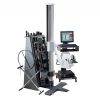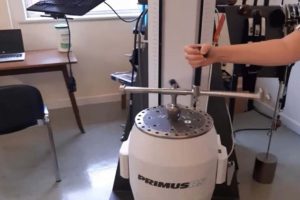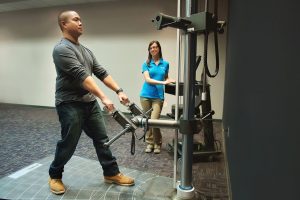
Does Hand Dominance Really Matter in Jobs, ADLs and Sports?
Treatment GuidelinesIn 200 years of studying hand dominance, we have not found clear-cut answer as to why we develop one side more than the other. But we do know hand strength and dominance affect our functional performance.
For nearly 200 years, people have studied hand dominance to find a reason for being either left-handed or right-handed or both1 (MASUD). It could be due to our parents’ preference for teaching, the culture in which we are raised, our religion, or even neurological development. The universal understanding, though, is we do not have a clear-cut answer. What we do know, is how hand strength and dominance affect our functional performance.
It’s a Right Hand’s World
Left-handed individuals have to contend with a world that is not always designed with their hand dominance in mind. Consider many of the desks in middle and high school. All the ones I recall using were set up only for a right-handed person. Countless other everyday items are designed for righties, like zippers, card swipe machines, measuring containers, even pens and markers! Yes, when writing in pen, lefties have to keep their hand off the page to prevent smearing.
The 10% Rule
You may be familiar with the “10% rule” in terms of hand dominance. It’s the generally accepted idea that the dominant hand is 10% stronger than the non-dominant hand. References for this can be found all the way back to 1954 with the Bechtol study in the Journal of Bone and Joint Surgery2. This study observed that most individuals presented a strength difference of 5-10% between their dominant and non-dominant hands. Other studies throughout the 1970s and 1980s and even in to the 2000s have helped to back up this concept.
To take this a step further, there is even data to support the strength comparison of a left-handed to right-handed individual. In 1989, Petersen et al showed that the 10% rule is consistent ONLY for right-handed people. Left-handed subjects showed a difference in strength of only .08% compared to the non-dominant hand3. So, the 10% strength difference rule may only apply to the 90% of the population that is right-handed.
The difference in strength between may not matter for your client population. For some basic return to function cases, having a 10% or greater difference isn’t clinically significant. But in more specific cases like Functional Capacity Evaluations, pre-employment testing, or Fit for Duty testing, you need greater precision. These services may require measuring and improving hand strength symmetry as well as achieving a specified level of strength and function.
Hand Strength and Dominance in ADLs and Jobs
Return to function for an injured heavy industrial worker is different than return to function for a typical office worker. Using the standard norms won’t provide a clear picture of whether the industrial worker can return to work. For example, a basic hand grip assessment can’t tell you how that person can perform the specific hand grips required for their job. For that you’d need a tool that’s tailored to the specific hand positioning and grip style, such as the PrimusRS or the Simulator II. Having specific job task tools will strengthen the clinical evidence of your assessment and provide better training for the client.
Hand Dominance and Sports
In most sports, hand dominance does not play a significant role in performance. Athletes in basketball, football, soccer and hockey don’t seem to have a competitive advantage from being right- or left-handed. However, some say that hand dominance is a contributing factor to success in upper-extremity-intensive sports like tennis, golf and especially baseball.
For example, left-handed pitchers are a rare asset in baseball. According to a fascinating article from sports writers at FiveThirtyEight, left-handed players throw nearly 28% of the innings in Major League Baseball, even though only 10% of males in the US throw left-handed4. The article also discusses platoon advantage, pitcher familiarity, spin rate, and whether there is a real statistical advantage to left handers. The takeaway is that hand dominance can play a role in the success of athletes, real or perceived.
Addressing Hand Dominance in Practice
No matter which hand a person uses for various activities, your immediate need as a rehab professional will be to address the injury. It’s most important to first assess whether the injury is on the dominant side, and how that affects job demands and ADLs. Be sure to ask numerous and descriptive questions related to how your client uses their hand dominance. Get creative in your exercise recommendations, and make adaptations when necessary, You, as a qualified therapist are capable of returning that individual to the level of function needed continue living their life.
Jeffrey Johnson, MA, ATC
Clinical Specialist
BTE
References
- Masud, Y, Ajmal A. 2012. Left-handed People in a Right-handed World: A Phenomenological Study. Pakistan Journal of Social and Clinical Psychology. Vol 40, (1). pp49-60
- Bechtol, C. 1954. Grip test: Use of a Dynamometer with Ddjustable Handle Spacing. Journal of Bone and Joint Surgery, 36A, 820-824
- Petersen P, Petrick M, Connor H, Conklin D. 1989. Grip Strength and Hand Dominance: Challenging the 10% Rule. American Journal of Occupational Therapy. Vol 43, 444-447.
- Molyneux, G., Birnbaum, P. 2020. What Really Gives Left-Handed Pitchers Their Edge? FiveThirtyEight. https://fivethirtyeight.com/features/what-really-gives-left-handed-pitchers-their-edge/





